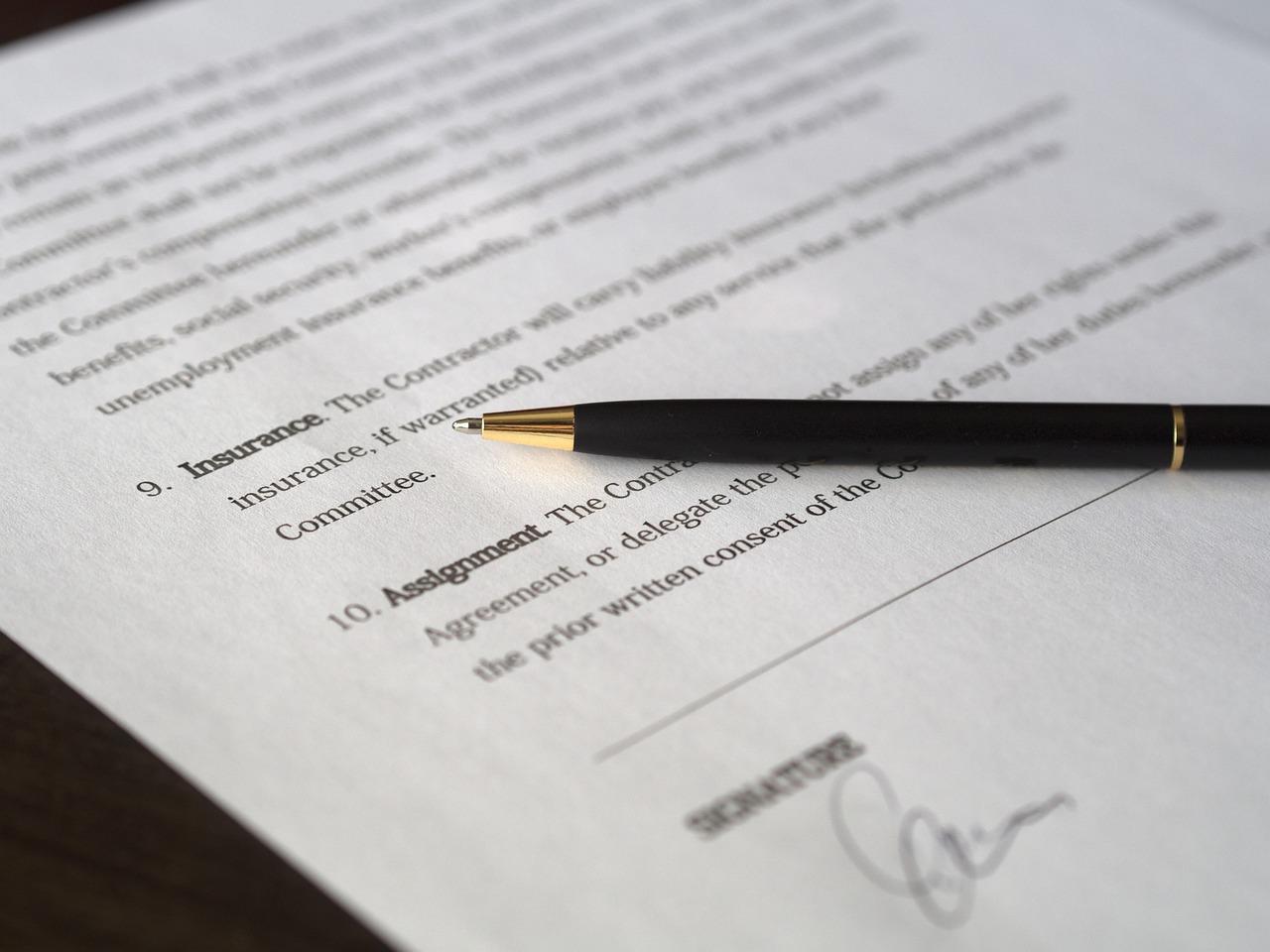The Preservation of Historical Documents - Challenges and Strategies
Preserving historical documents is a monumental task that comes with its own set of challenges and requires strategic planning to ensure these invaluable records are safeguarded for future generations. From the aging of materials to the threat of natural disasters, maintaining historical documents demands a proactive approach to conservation and digital preservation.

Significance of Historical Documents
Historical documents hold a unique significance in our society, serving as windows into the past and invaluable resources for understanding our cultural heritage. These documents, ranging from ancient manuscripts to more recent records, provide a direct connection to the events, people, and ideas that have shaped our history. Without the preservation of these documents, vital pieces of our collective memory would be lost, leaving future generations with a fragmented understanding of the world that came before them.
Imagine a world where we couldn't trace the evolution of language, the progression of scientific thought, or the struggles and triumphs of past civilizations. Historical documents offer us a glimpse into the lives of those who came before us, shedding light on their beliefs, achievements, and challenges. They are not just pieces of paper or digital files; they are portals to different eras, offering insights and lessons that continue to resonate in the present.
By safeguarding historical documents, we not only preserve the stories of our ancestors but also ensure that their experiences are not forgotten or distorted over time. These records serve as evidence of our shared humanity, bridging the gap between the past and the present. Through the careful preservation of historical documents, we honor the voices of those who have shaped our world and pave the way for future generations to learn from the mistakes and successes of the past.

Challenges in Preservation
Preserving historical documents poses a multitude of challenges that require careful consideration and strategic planning. One of the primary obstacles faced by archivists and historians is the natural process of aging, which can lead to the deterioration of paper, ink, and other materials over time. Additionally, environmental conditions such as humidity, temperature fluctuations, and exposure to light can accelerate the degradation of documents, making their preservation a constant battle against these elements.
Technological obsolescence is another significant challenge in the preservation of historical documents. As digital formats evolve rapidly, ensuring the long-term accessibility of digital records becomes increasingly complex. The risk of data loss due to outdated file formats, software compatibility issues, and hardware failures underscores the importance of adopting sustainable digital preservation strategies.
Furthermore, the sheer volume of historical documents requiring preservation presents a logistical challenge for institutions and professionals tasked with safeguarding these records. Prioritizing resources, managing large collections, and implementing comprehensive preservation plans are essential components in overcoming the challenges associated with preserving historical documents effectively.

Digital Preservation Techniques
Exploring the importance of preserving historical documents, this article delves into the various challenges faced in maintaining these valuable records and highlights strategies that can be employed to ensure their longevity and accessibility.
Understanding the intrinsic value of historical documents in preserving cultural heritage and providing insights into the past, this section discusses why their preservation is crucial for future generations.
Identifying factors such as aging, environmental conditions, and technological obsolescence that pose significant challenges to the preservation of historical documents, this section examines the obstacles faced by archivists and historians.
Incorporating digital technologies for the preservation of historical documents, this section explores methods such as digitization, metadata management, and cloud storage as strategies to safeguard these valuable records for posterity.
Digitization plays a vital role in preserving historical documents by converting them into digital formats, ensuring their accessibility and longevity in the digital age. Metadata management involves organizing and describing digital assets to facilitate search and retrieval, enhancing the discoverability of historical records. Cloud storage offers a secure and scalable solution for storing digital copies of historical documents, providing backup and remote access capabilities.
Discussing the importance of conservation and restoration techniques in maintaining the physical integrity of historical documents, this section highlights the role of experts in preserving delicate and deteriorating materials.
Emphasizing the significance of collaborative efforts among institutions, governments, and communities in preserving historical documents, this section explores the benefits of partnerships in ensuring the long-term sustainability of archival collections.
Addressing the risks posed by natural disasters and emergencies to historical documents, this section examines the importance of disaster preparedness plans and recovery strategies to mitigate potential damage and loss.
Exploring the legal and ethical frameworks surrounding the preservation of historical documents, this section discusses issues such as copyright, access restrictions, and privacy concerns that impact archival practices.
Looking ahead, this section explores emerging technologies and trends in document preservation, including artificial intelligence, blockchain, and decentralized storage, and their potential impact on the future of preserving historical records.

Conservation and Restoration Methods
Conservation and restoration methods play a crucial role in maintaining the physical integrity and longevity of historical documents. These techniques are essential in ensuring that delicate and deteriorating materials are preserved for future generations to study and appreciate. Conservation involves the careful treatment of documents to prevent further damage and deterioration, while restoration focuses on repairing existing damage to return the document to its original state.
Experts in the field of conservation and restoration employ a variety of specialized techniques to address different types of damage. For example, deacidification is a common method used to neutralize acidic components in paper documents, preventing further deterioration caused by acidity. Similarly, techniques such as encapsulation and lamination are used to protect fragile documents from handling and environmental factors that could cause physical damage.
Conservation and restoration efforts are often carried out in controlled environments, such as specialized laboratories, where experts can closely monitor and treat documents with precision. These facilities are equipped with tools and materials specifically designed for the preservation of historical materials, ensuring that each document receives the care it needs to remain intact for years to come.
Collaboration between conservators, historians, and archivists is essential in developing comprehensive conservation and restoration plans for historical documents. By combining expertise in material science, historical research, and preservation techniques, professionals can work together to ensure that documents are conserved in a way that respects their historical significance and cultural value.

Collaborative Preservation Initiatives
Collaborative Preservation Initiatives play a crucial role in ensuring the long-term sustainability of historical documents. By fostering partnerships among institutions, governments, and communities, these initiatives leverage collective expertise and resources to address the challenges of preserving valuable records. Through collaborative efforts, stakeholders can pool their knowledge and skills to develop comprehensive preservation strategies that encompass a wide range of archival materials.
One key aspect of collaborative preservation is knowledge sharing. By sharing best practices, research findings, and innovative techniques, institutions can enhance their preservation methods and adapt to evolving technologies. This exchange of information not only benefits individual organizations but also contributes to the advancement of preservation practices on a broader scale.
Furthermore, collaborative preservation initiatives promote the digitization and accessibility of historical documents. By working together, institutions can digitize their collections more efficiently, making these valuable records available to a wider audience. This digital access not only facilitates research and education but also helps to safeguard the originals by reducing their handling and exposure to potential damage.
Partnerships in preservation also extend beyond the realm of archival institutions. Collaboration with local communities and cultural organizations fosters a sense of shared responsibility for preserving heritage. Engaging community members in preservation efforts not only raises awareness about the importance of historical documents but also ensures that diverse perspectives and voices are represented in the archival record.
Moreover, collaborative preservation initiatives often involve advocacy and outreach activities to garner support for preservation efforts. By raising public awareness about the significance of historical documents, these initiatives seek to mobilize resources and secure funding for preservation projects. Through partnerships with government agencies and funding bodies, stakeholders can work together to secure the necessary resources to safeguard valuable archival collections for future generations.

Disaster Preparedness and Recovery
Disaster Preparedness and Recovery are critical aspects of ensuring the safety and longevity of historical documents. Natural disasters, such as floods, fires, and earthquakes, can pose significant risks to archival collections, potentially causing irreparable damage. Establishing comprehensive disaster preparedness plans is essential to mitigate these risks and safeguard valuable records from potential harm. Archivists and conservation experts must carefully assess the vulnerabilities of historical documents to various types of disasters and implement proactive measures to minimize the impact of emergencies.
One effective strategy in disaster preparedness is the creation of emergency response teams trained to handle different types of crises. These teams are equipped with the necessary tools and expertise to respond swiftly in the event of a disaster, ensuring that appropriate measures are taken to protect and recover historical documents. Additionally, implementing preventive measures such as proper storage facilities, fire suppression systems, and climate control technologies can help reduce the likelihood of damage during emergencies.
Recovery efforts following a disaster are equally crucial in restoring damaged historical documents to their original state. Conservation experts employ specialized techniques to salvage and repair documents that have been affected by water, smoke, or mold. These restoration processes require meticulous attention to detail and expertise in handling fragile materials to ensure that the documents are preserved for future generations.
Collaboration with emergency response agencies, such as fire departments and disaster relief organizations, is essential in coordinating recovery efforts and accessing resources needed to restore damaged collections. Archivists work closely with these agencies to prioritize the salvage of historical documents and minimize further deterioration. Establishing strong relationships with local authorities and disaster response teams can facilitate a more coordinated and effective recovery process in the aftermath of a disaster.

Legal and Ethical Considerations
When it comes to the preservation of historical documents, various legal and ethical considerations come into play, shaping the practices and policies surrounding access, ownership, and use of these valuable records. One of the key issues that archivists and institutions face is copyright protection. Determining the copyright status of historical documents can be complex, especially when dealing with older materials where the rights may have expired or are unclear. Establishing clear guidelines for copyright compliance is crucial to avoid legal disputes and ensure responsible stewardship of archival collections.
Additionally, access restrictions pose a challenge in balancing the need for public access to historical documents with the protection of sensitive or confidential information. Archivists must navigate the delicate balance between promoting transparency and respecting privacy rights, often implementing access policies that restrict certain materials based on legal or ethical considerations. By establishing ethical guidelines for access and use, institutions can uphold professional standards while safeguarding the integrity of the historical record.
Privacy concerns also play a significant role in the preservation of historical documents, particularly when dealing with personal or sensitive information. Archivists must adhere to ethical principles that prioritize the privacy rights of individuals represented in the documents, ensuring that confidential data is protected from unauthorized disclosure or misuse. Implementing data protection measures and redaction techniques can help mitigate privacy risks and uphold ethical standards in archival practices.
Moreover, considerations of cultural sensitivity and indigenous rights are essential in the preservation of historical documents that may contain information of cultural or spiritual significance to specific communities. Respecting the heritage rights of indigenous peoples and marginalized groups is crucial in archival work, requiring collaborative approaches that involve community consultation and consent in decision-making processes. By incorporating decolonial perspectives and inclusive practices in archival initiatives, institutions can promote cultural diversity and address historical injustices in document preservation.

Future Trends in Document Preservation
As we look ahead to the future of document preservation, exciting trends and technologies are emerging that have the potential to revolutionize the way historical records are safeguarded for future generations. One of the most promising developments in this field is the integration of artificial intelligence (AI) into preservation practices. AI algorithms can analyze, classify, and organize vast amounts of historical data, making it easier for archivists to manage and preserve valuable documents efficiently.
Another trend shaping the future of document preservation is the adoption of blockchain technology. By utilizing blockchain, historical documents can be securely stored and accessed in a decentralized manner, ensuring their authenticity and integrity. This distributed ledger technology offers a tamper-proof way to verify the provenance of historical records, enhancing trust and transparency in archival practices.
Decentralized storage solutions are also gaining traction in the preservation of historical documents. By spreading data across a network of nodes, decentralized storage systems reduce the risk of data loss or corruption, providing a robust and resilient infrastructure for long-term document preservation.
Furthermore, advancements in data encryption and cybersecurity measures are enhancing the security of historical documents stored digitally. By implementing robust encryption protocols and multi-factor authentication, archivists can protect sensitive historical records from unauthorized access or cyber threats, ensuring their confidentiality and integrity.
Overall, the future of document preservation is marked by innovation and technological advancements that promise to overcome traditional challenges and ensure the longevity and accessibility of historical records for generations to come.
Frequently Asked Questions
- What are historical documents?
Historical documents are records of past events, activities, or people that hold significant cultural, historical, or societal value. These can include letters, manuscripts, photographs, maps, and other materials that provide insights into the past.
- Why is the preservation of historical documents important?
The preservation of historical documents is crucial for maintaining cultural heritage, understanding historical events, and providing future generations with valuable insights into the past. By safeguarding these records, we can ensure their longevity and accessibility for research and educational purposes.
- What are the challenges faced in preserving historical documents?
Challenges in preserving historical documents include factors such as aging, environmental conditions, technological obsolescence, and physical deterioration. Archivists and historians must address these obstacles to prevent the loss of valuable historical information.
- How can digital preservation techniques help in safeguarding historical documents?
Digital preservation techniques, such as digitization, metadata management, and cloud storage, play a crucial role in safeguarding historical documents by creating digital copies that can be accessed and preserved more easily. These methods help in ensuring the long-term accessibility of valuable records.
- Why is collaborative preservation important for historical documents?
Collaborative preservation efforts involving institutions, governments, and communities are essential for ensuring the sustainable preservation of historical documents. By working together, stakeholders can pool resources, expertise, and technologies to protect and maintain valuable archival collections for future generations.
- What legal and ethical considerations are involved in the preservation of historical documents?
Legal and ethical considerations in the preservation of historical documents include issues such as copyright, access restrictions, and privacy concerns. Archivists and institutions must navigate these frameworks to balance the preservation of records with the protection of intellectual property rights and individual privacy.



















